15 Secrets to Make Everyday Items Last Longer and Save Money
With a little love and care, everyday items we toss out could last so much longer. Discover the magic of freezing your tights, squishing your toilet paper, and keeping your hands off the cheese to make your essentials go the extra mile. Why replace when you can refresh?
1. Squash toilet paper rolls.
Squash that roll to put the brakes on runaway paper! This trick is a game-changer if you have kids (or pets) who can’t resist unspooling it just for fun. One quick press—extra cash in your wallet.
2. Vacuum carpets regularly.
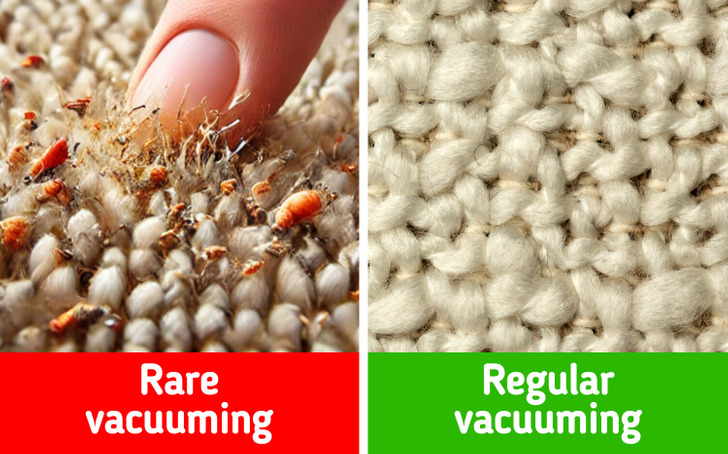
Regular vacuuming isn’t just sprucing up your space—it’s the secret to making your carpets last longer. Everyday dust and grime don’t just sit on top; they burrow deep into the fibers, making your carpets look dull over time.
And those tiny, rough particles like little stones? They’re like mini knives slicing into your carpet, causing real damage. So grab that vacuum and give your carpets some love.
3. Wash clothes inside out.

Your clothing labels might keep mum, but turning your clothes inside out before washing is a laundry hack you shouldn’t skip! Here’s the scoop: flipping them protects the outer fabric from wear and tear, lets detergent zero in on sweat stains, and cuts down on annoying pilling and thread knots. Plus, it safeguards any decorative details from damage. So, give your garments a flip before washing—they’ll look fresher and last longer!
4. Store bread in the freezer.
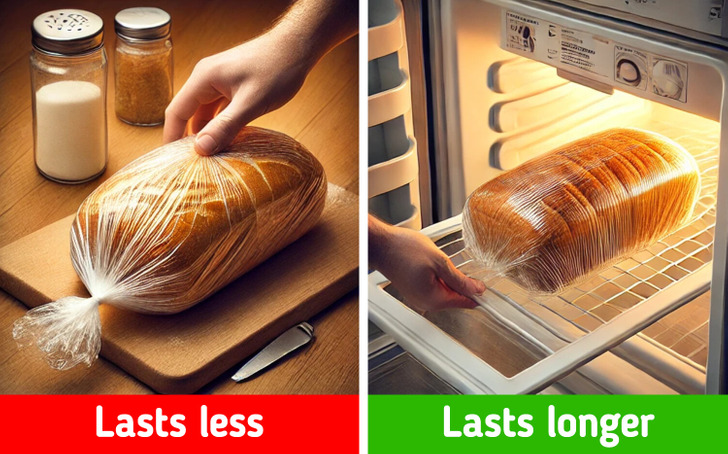
While keeping bread in the fridge doesn’t outright harm your loaf, science says refrigeration actually speeds up the staling process faster than if you left it on the counter. So, what’s the secret to longer-lasting bread? Wrap it tightly in plastic or foil, pop it in the freezer—sliced or whole—and when you’re ready, reheat it in the oven for that fresh-from-the-bakery taste.
If reheating isn’t your jam, you can keep it well wrapped at room temperature, but be aware it’ll start losing its mojo after a day or so. Bottom line: for the freshest bread that lasts, the freezer is your best friend!
5. Don’t touch cheese with bare fingers.

Who knew cheese could be such a diva? Handle it with your bare hands—even if they’re freshly washed—and you’re basically fast-tracking mold growth. Instead, wrap your fingers in plastic or slip on some food-safe gloves when dealing with your favorite cheddar or brie.
And don’t forget: a clean cutting board is a must. Any leftover crumbs can invite unwanted mold to crash your cheesy party.
6. Rotate and flip your mattress.
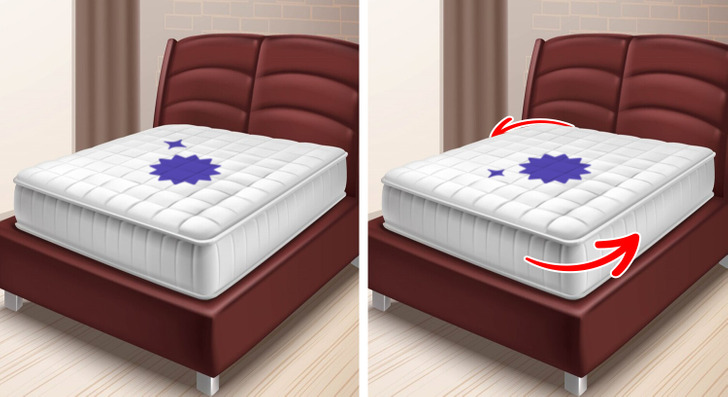
If you want to keep that “brand-new bed” feeling every night, here’s the secret: give your mattress a spin every three months. Just rotate it, so the head becomes the foot—easy-peasy. This simple move helps maintain better support over time, ensures even wear of the fillings, and minimizes those pesky dips and sags.
If you’ve got a double-sided mattress, don’t forget to flip it over during each rotation to keep both sides fresh and comfy!
7. Freeze flour.
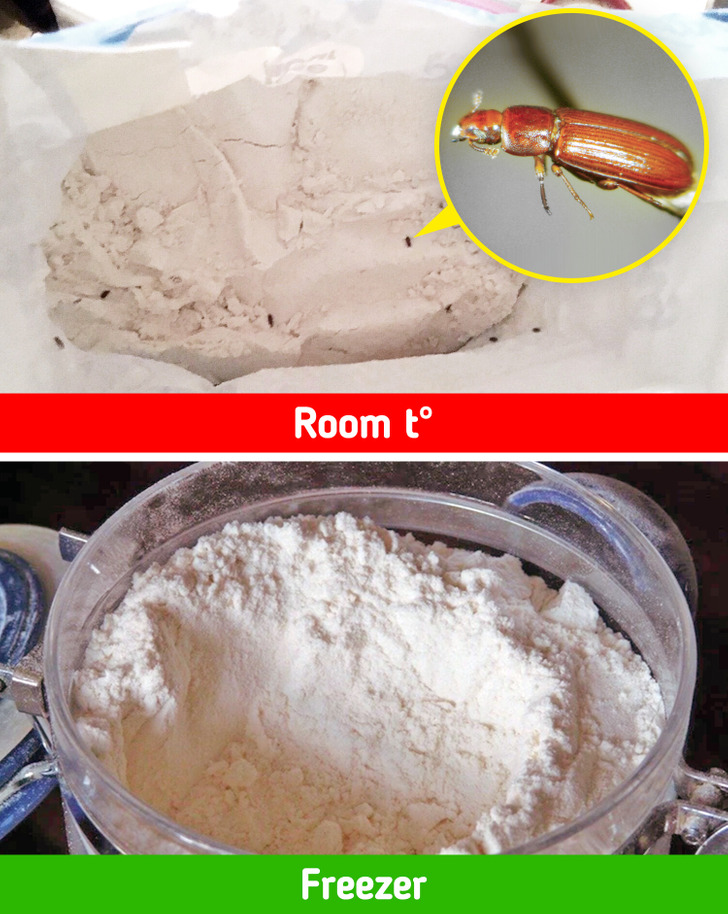
White flour can chill in the freezer for up to two years, while whole grain flour stays good for about one year. Plus, freezing zaps any pesky pests that might be lurking. If freezer space is tight, the fridge is your next best friend—white flour lasts up to one year there, and whole grain flour keeps for about six months.
8. Freeze SOS pads.
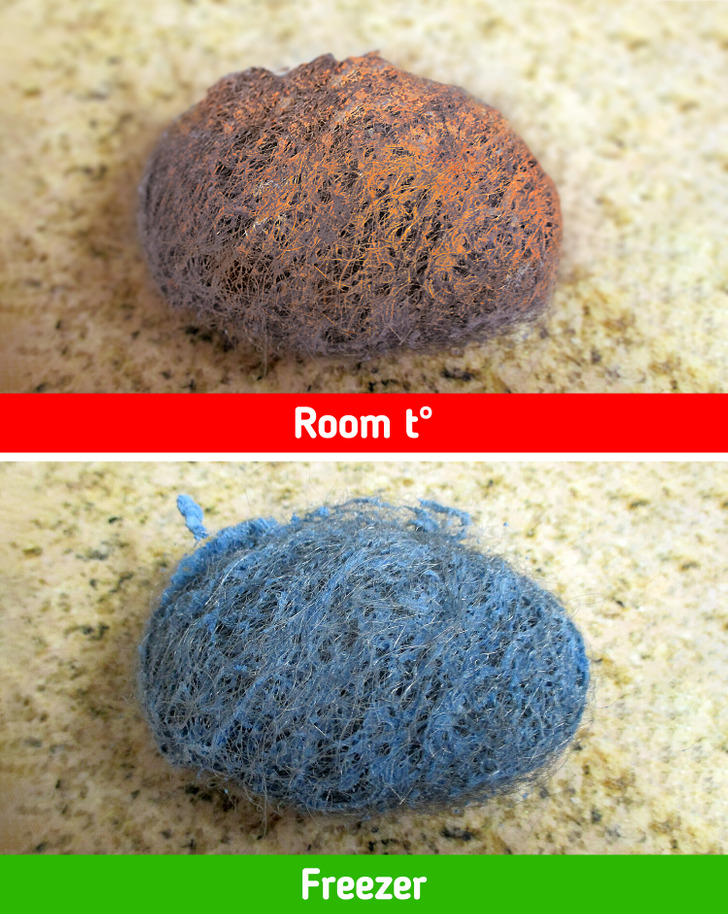
Here’s a clever fix for those who are fed up with tossing out an SOS pad after just one use. To prevent rusting, simply pop your used pads into the freezer after each use. Attach a small sandwich bag to your freezer door shelf and fill it with those lightly used scrubbing pads. Next time you need one, it’ll be rust-free and ready to tackle the grime.
9. Add a few grains of rice to salt.
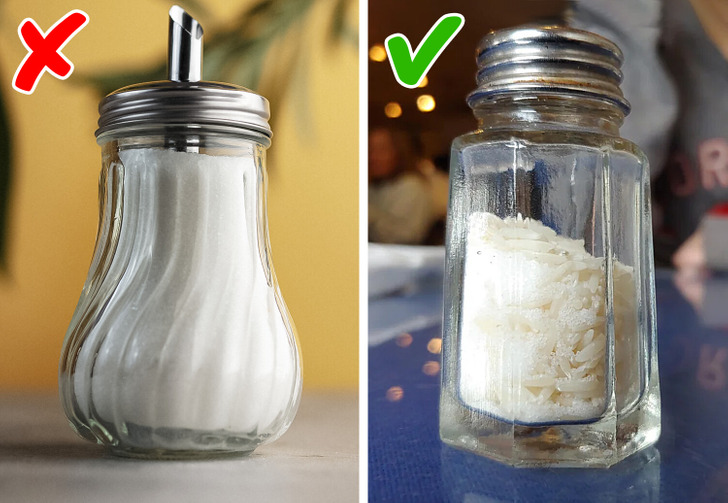
Fed up with your salt shaker turning into a salty clump? Try tossing in a couple of uncooked rice grains at the bottom before filling it with salt. The rice acts like a mini moisture magnet, soaking up water vapor faster than the salt can.
The result? Your salt stays loose and flows freely—no more banging the shaker to get it out!
10. Oil wooden cutting boards.
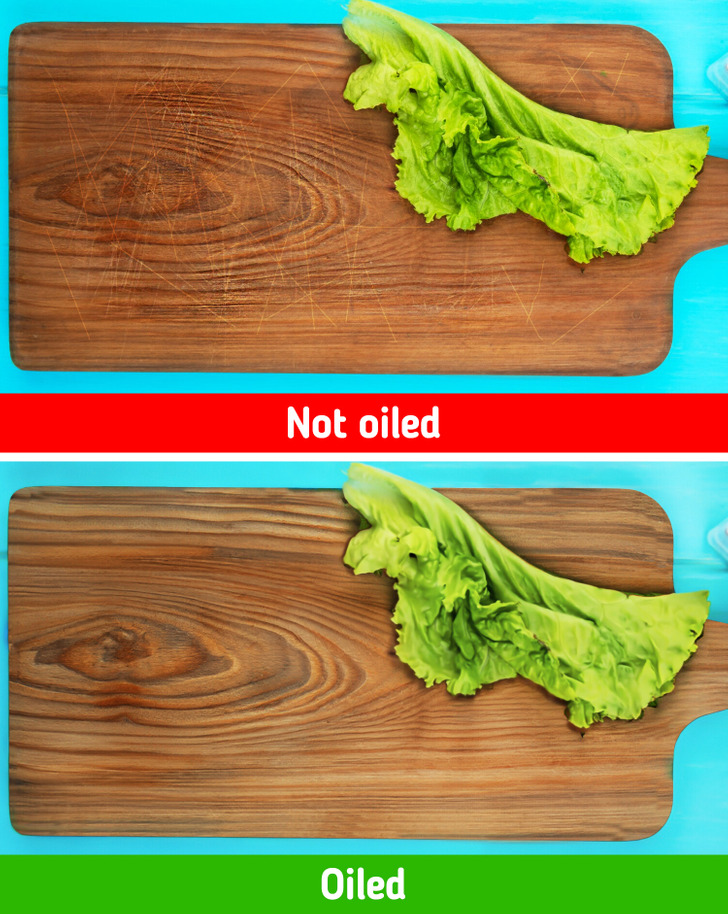
To prevent drying out—which can cause warping and cracks—make sure to oil your cutting boards at least once a month. Here’s a simple way to do it:
- Sprinkle coarse salt over the board and scrub it with half a lemon. Wipe it down and let it air dry completely.
- Using a clean, soft cloth or paper towel, apply a thin, even layer of mineral oil all over the wood surface.
- Allow the oil to penetrate the wood for 2 to 8 hours.
- Use a dry cloth or paper towel to remove any leftover oil, so the board doesn’t feel damp or sticky.
11. Wash your jeans wisely.

Hold up before you toss those jeans in the wash! Washing them every 10 wears is the sweet spot to keep their unique style and fit intact. Overwashing can fade their color and mess with that perfect denim vibe.
Got a pesky stain? No worries! Just spot-clean it with a bit of mild soap and a damp cloth or even an old toothbrush between washes.
12. Minimize the use of fabric softeners.

Some fabrics absolutely hate softeners. Like, NEVER EVER let it touch them! For example, using a softener on your jeans can leave a residue that ruins their vibe. Other items to keep away from softeners are athletic or performance wear, microfiber cloths, towels, children’s sleepwear, swimwear, and lingerie.
13. Store onion and garlic correctly.
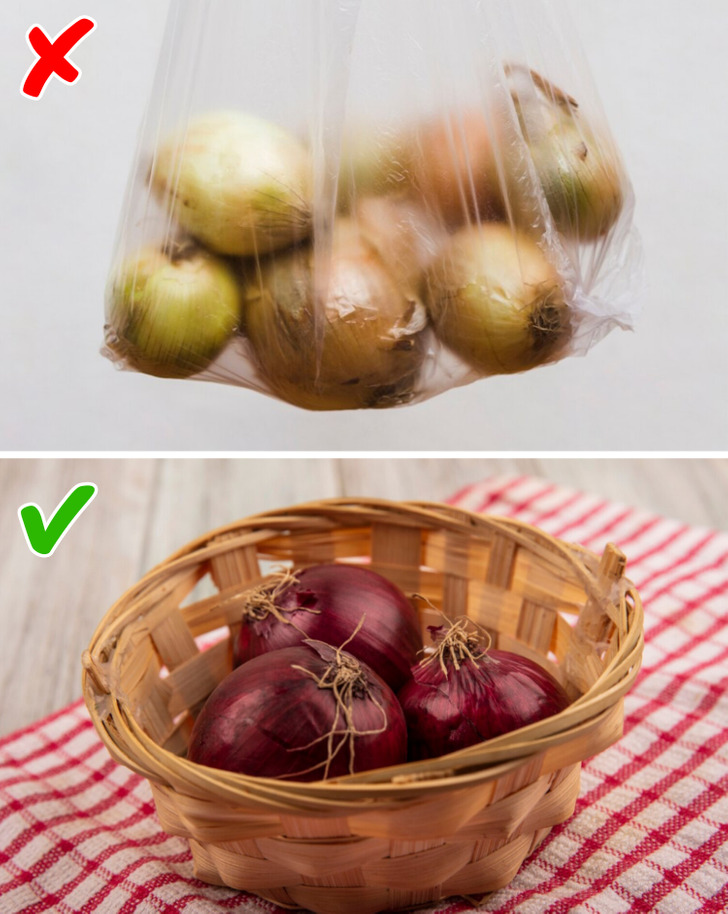
Ditch sealed plastic to keep onions and garlic fresh and flavorful. It speeds up spoilage. Instead, store them in a cool, dark spot with plenty of airflow—think paper bags or baskets. Done right, they’ll stay good for up to six months!
14. Freeze your tights.
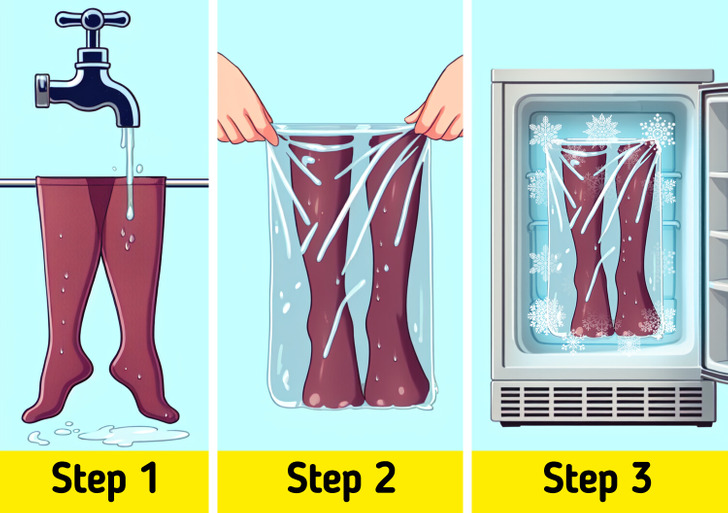
It’s a common annoyance: a single snag can ruin your tights, leading to frequent and costly replacements. That’s why we’re thrilled about this clever hack. Simply throw your tights in the freezer before wearing them for the first time, and you’ll find they become less prone to ripping.
All you need to do is lightly dampen them under running water and gently squeeze them out. Place them in a plastic bag and leave them in the freezer overnight. The following day, take them out and let them thaw naturally at room temperature.
15. Don’t wear the same pair of shoes two days in a row.
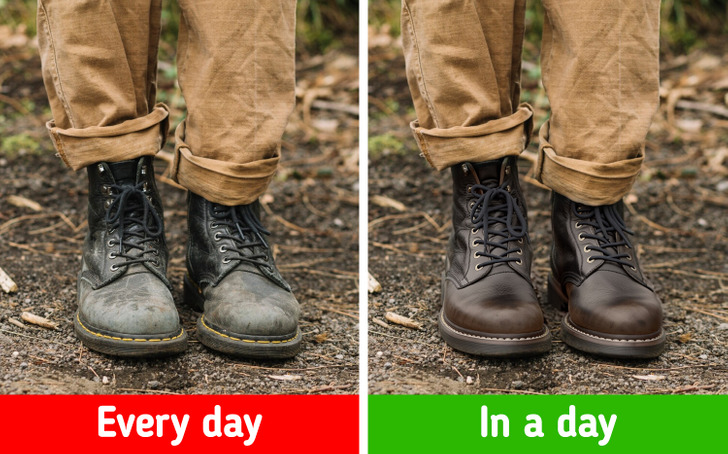
Wearing your shoes all day is like putting them through a marathon—they need time to recover! As they absorb moisture and flex with each step, the leather becomes softer and more pliable than when you first put them on. But leather needs time to bounce back to its original form, and a single night isn’t enough. Skip giving them a breather, and you’ll be shopping for new shoes sooner than you’d like.
Think you’ve mastered the everyday stuff? Turns out, you might be eating, drinking, and even flushing all wrong. Don’t worry—the good news is, you can fix it all in no time. Let’s get back to basics!


